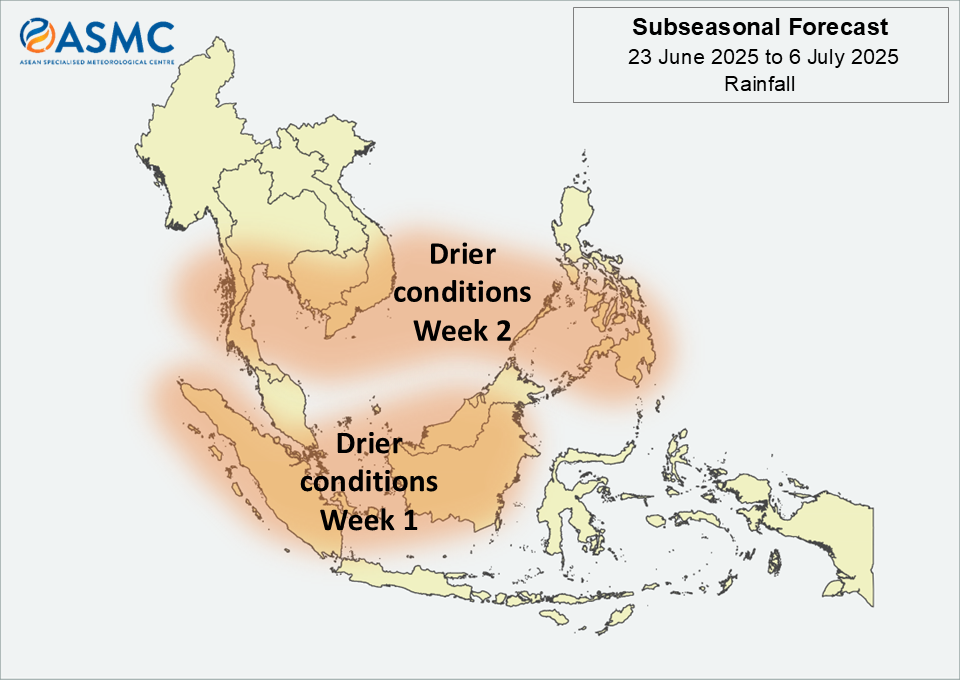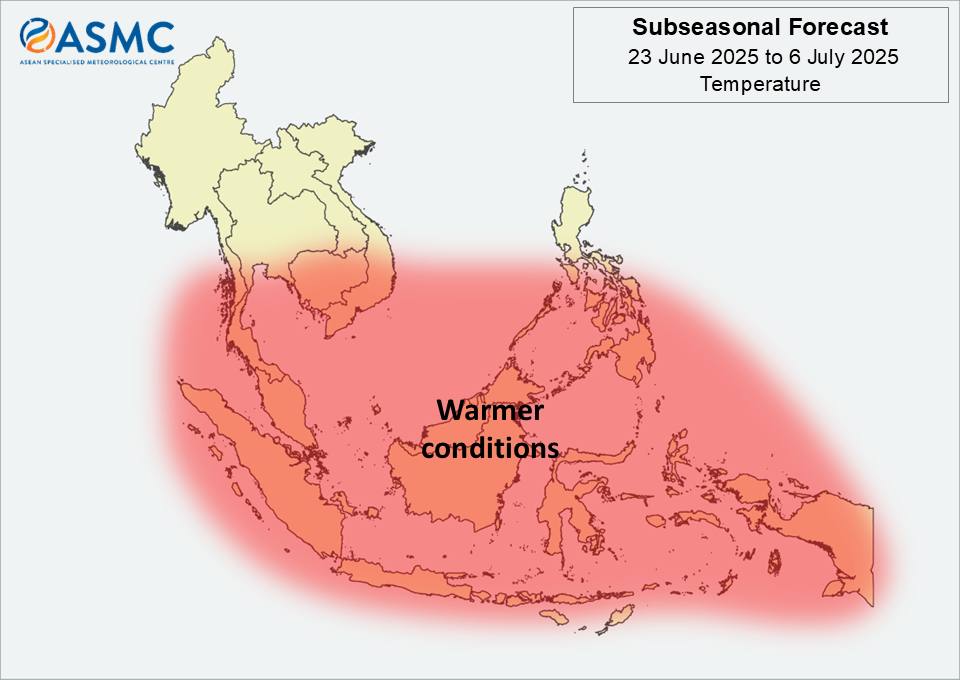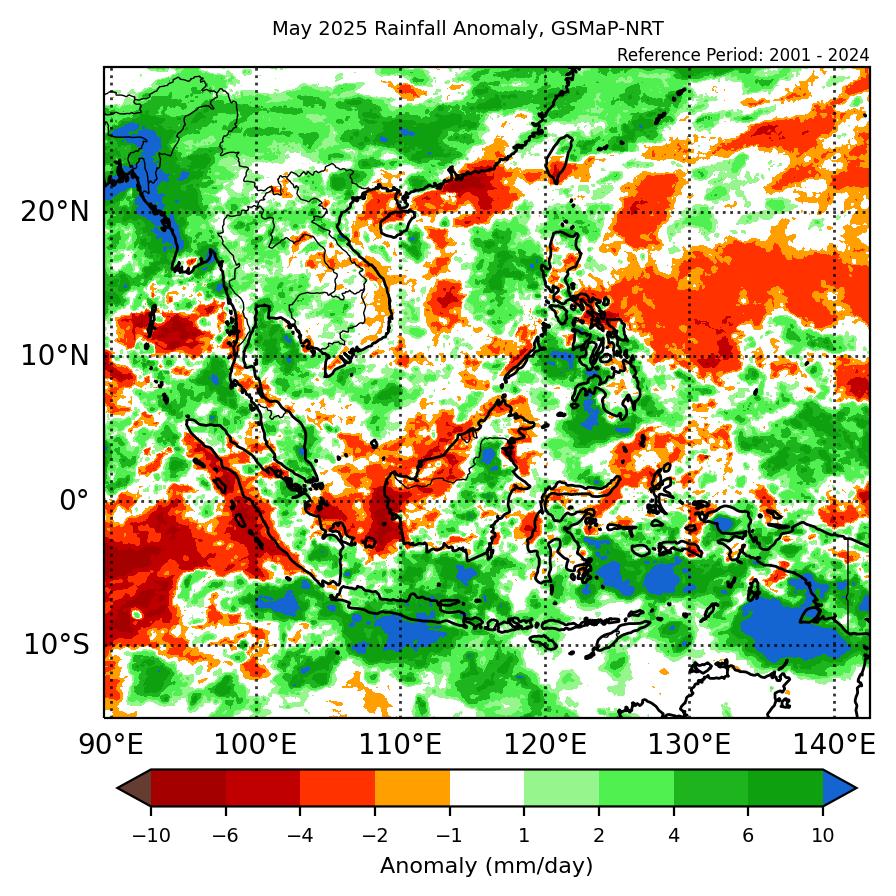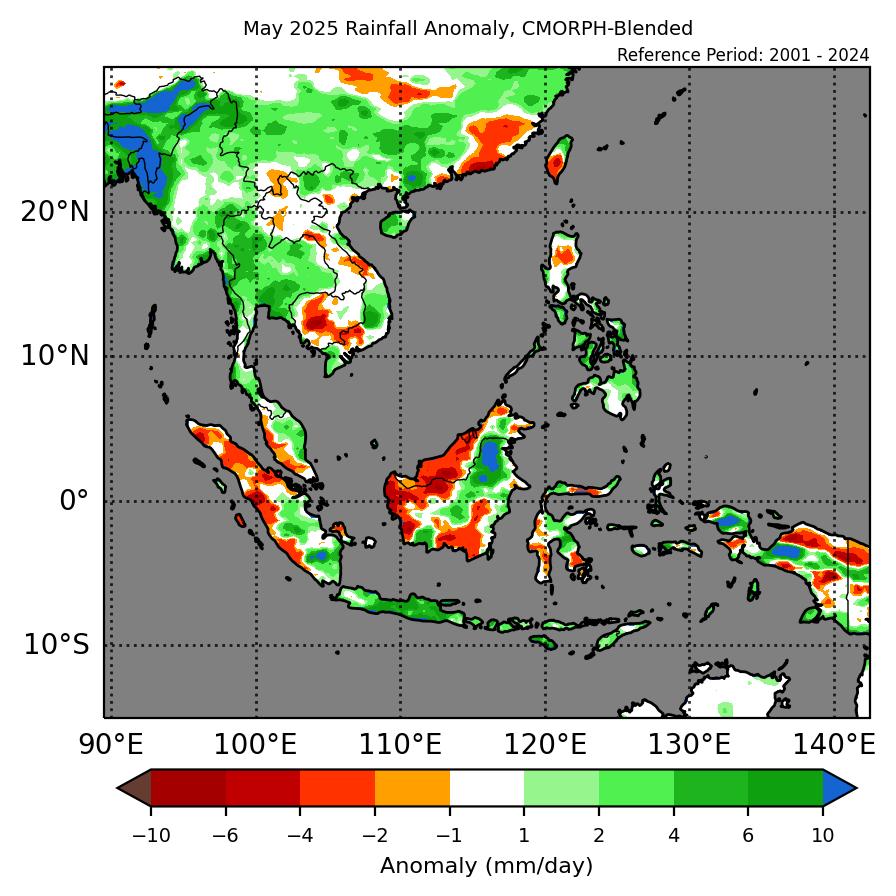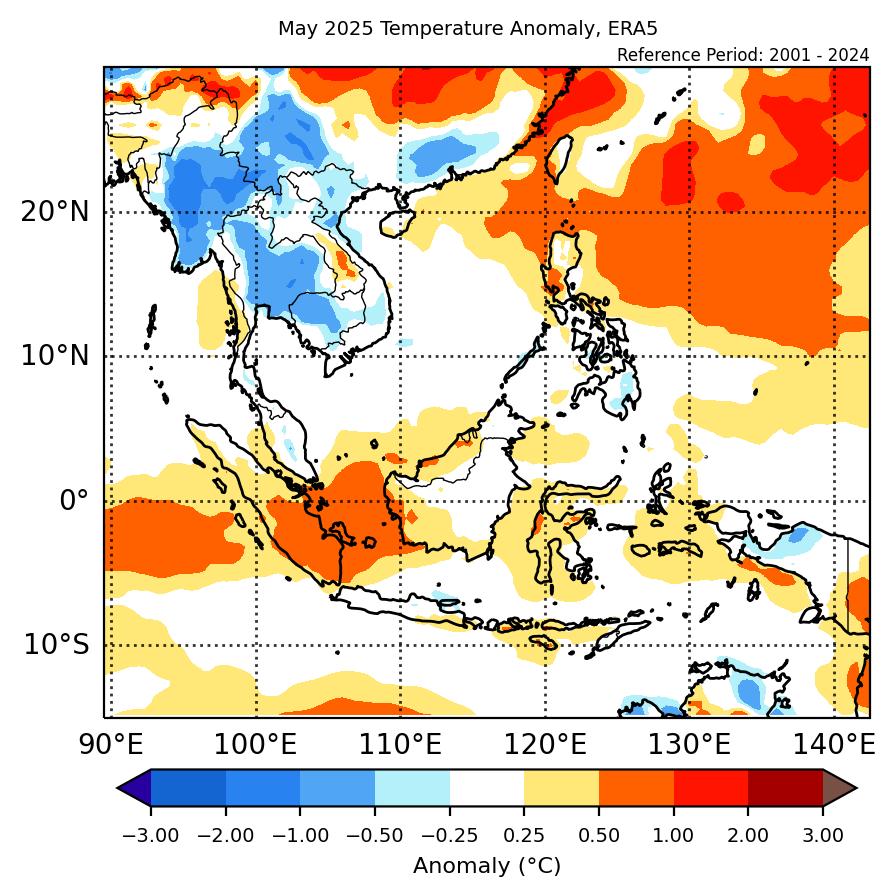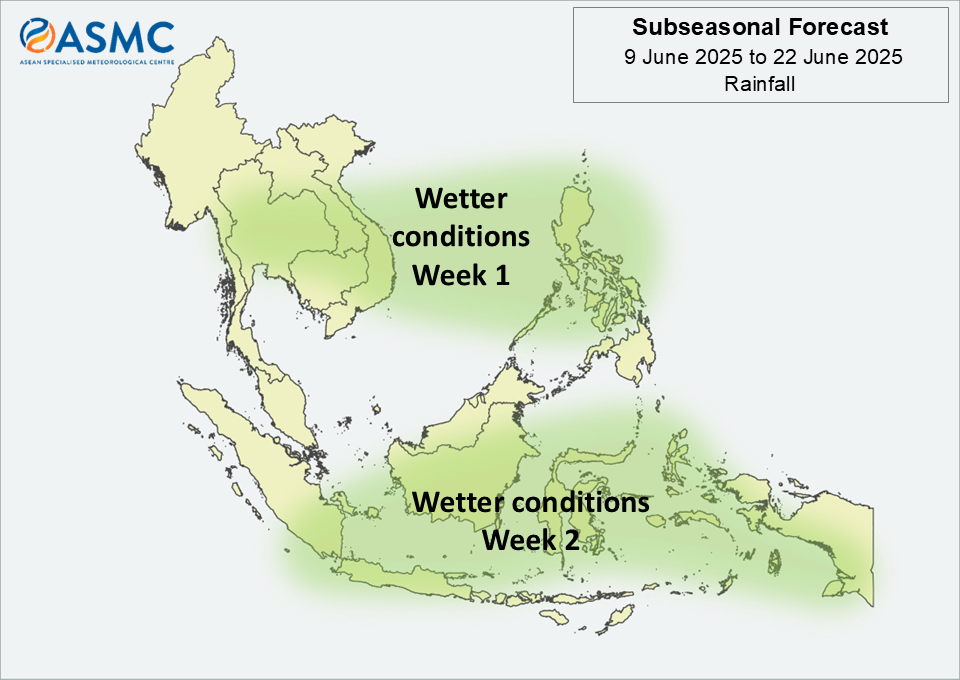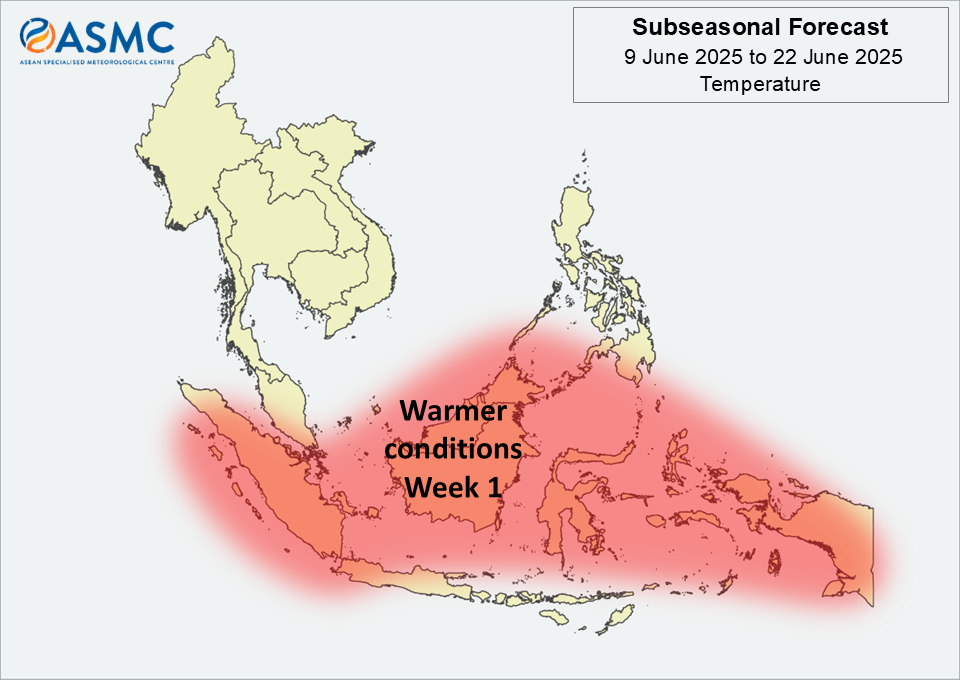Review of Regional Haze Situation for May 2025
1.1 Inter-monsoon conditions prevailed throughout the ASEAN region during May 2025, characterised by light winds that varied in direction across most parts of the region (Figure 1).
1.2 Wet weather dominated over most parts of the ASEAN region as the monsoon rainband continued to shift northwards from the Equator, with the northern ASEAN region experiencing increased amounts of rainfall compared to previous months. Due to the expected persistent shower activities over the Mekong sub-region, the Alert Level was downgraded from Alert Level 2 to 1 on 13 May 2025, and subsequently from Alert level 1 to 0 on 21 May 2025, signalling the end of the dry season for the sub-region. While showers persisted over most areas in the southern ASEAN region this month, drier conditions were observed over parts of Sumatra and Kalimantan for a few days (Figure 1).

Figure 1: Average Daily Rainfall and Mean Winds for May 2025. (Source: JAXA GsMaP and GFS, respectively)
1.3 The hotspot counts for the ASEAN region for May 2025 were comparable to those recorded in May of previous years (Figure 2 & 3).
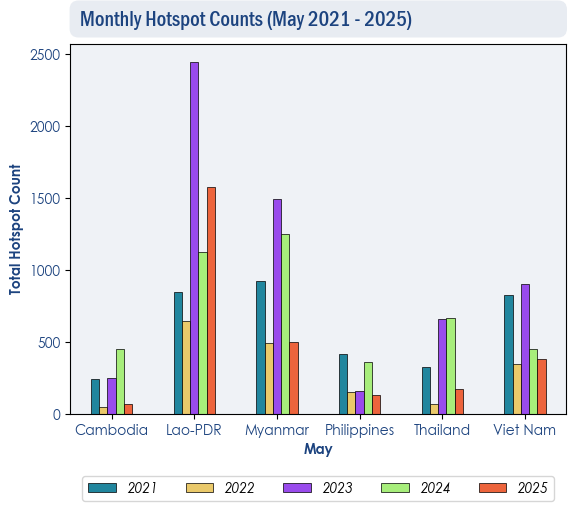
Figure 2: Hotspot counts for the northern ASEAN region for May (2021-2025) based on NOAA-20 satellite surveillance.
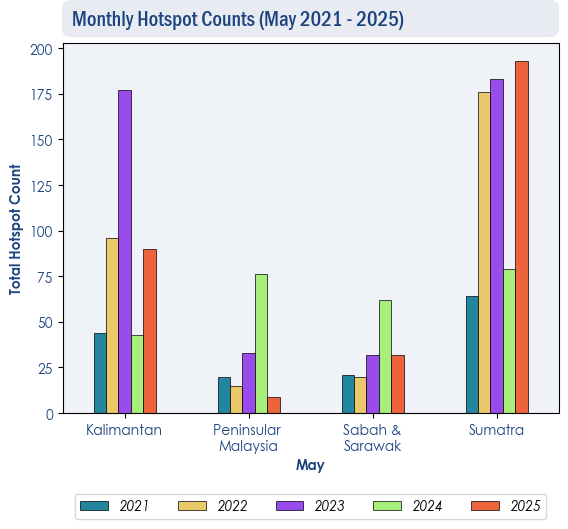
Figure 3: Hotspot counts for the southern ASEAN region for May (2021-2025) based on NOAA-20 satellite surveillance.
1.4 Isolated to scattered hotspots were detected over most parts of the Mekong sub-region, especially over the northern parts of Lao PDR where intense and persistent hotspot clusters were observed (Figure 4 and 5). Moderate to dense transboundary smoke haze was also observed to drift eastwards from the northern parts of Lao PDR into the northern parts of Viet Nam on a few days (Figure 6 and 7).
1.5 1.5 Over the southern ASEAN region, the hotspot and smoke haze situation remained mostly subdued. However, there were a few days when slight localized smoke plumes were observed emanating from hotspots in the central parts of Sumatra, the western parts of Kalimantan and Sarawak (Figure 4, 5 and 8).

Figure 4: Distribution of hotspots detected in May 2025 based on NOAA-20 satellite surveillance.

Figure 5: Maximum fire intensity in May 2025 based on NOAA-20 satellite surveillance.

Figure 6: Number of days with moderate to dense smoke haze observed in May 2025 based on satellite imagery, ground observations, and air quality reports.

Figure 7: Moderate to dense transboundary smoke haze observed over the northern parts of Lao PDR and Viet Nam on 7 May 2025. (Source: NOAA-20 satellite surveillance)
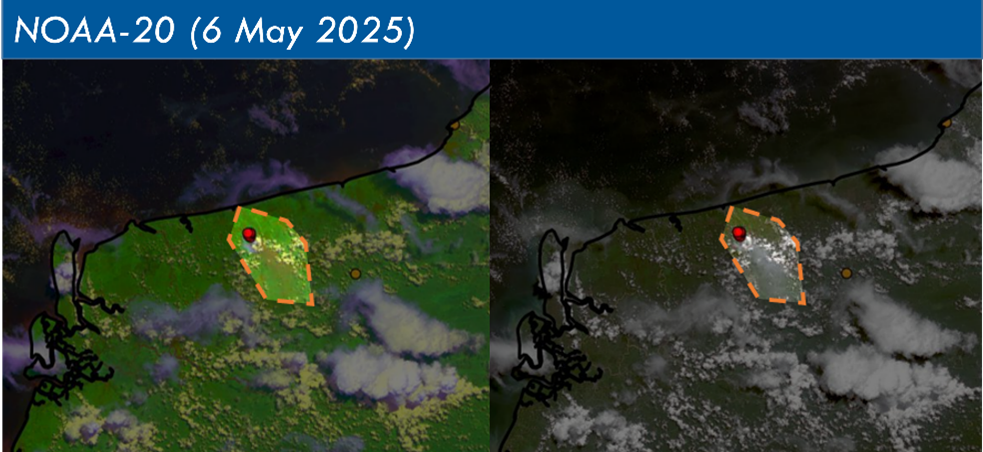
Figure 8: Localised smoke plume observed to emit from hotspots detected in Sarawak on 6 May 2025. (Source: NOAA-20 satellite surveillance)
